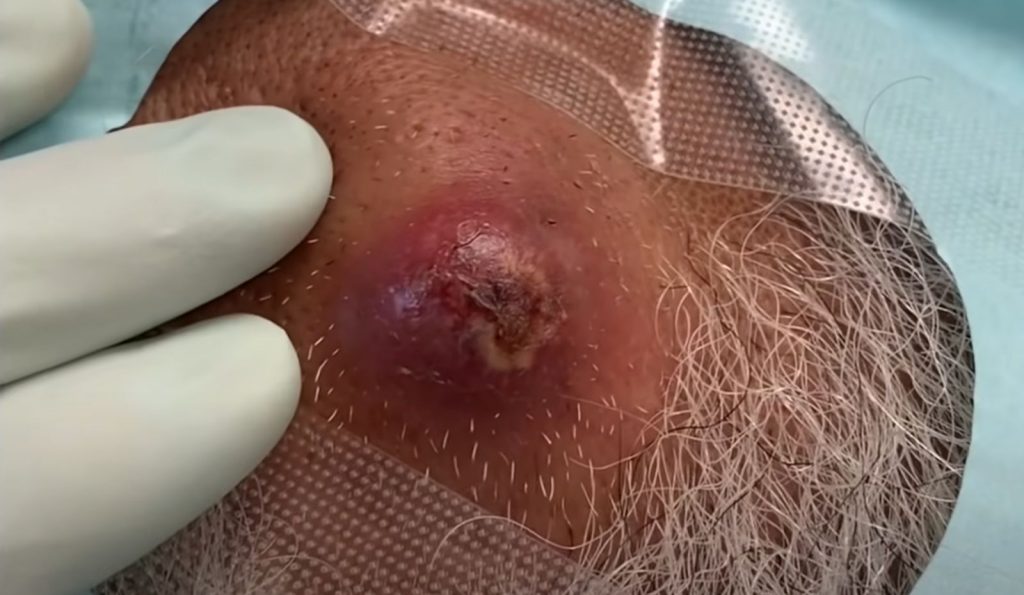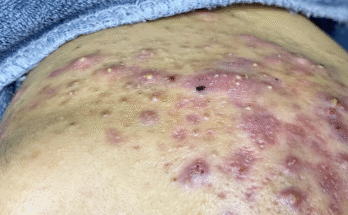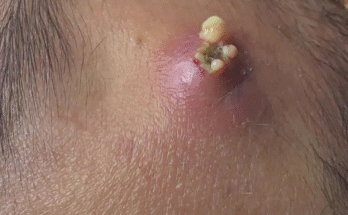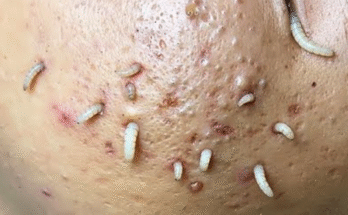Conquer Those Cystic Blackheads: A Comprehensive Guide
Dealing with cystic blackheads? You’re not alone. These stubborn blemishes lie deep within the skin, causing pain, inflammation, and potential scarring. This guide will equip you with the knowledge and techniques to effectively manage and, where appropriate, safely remove these troublesome skin concerns.
Understanding the Beast: Cystic Blackheads Explained
What are Blackheads, Anyway?
Blackheads, also known as open comedones, are a common type of acne. They occur when hair follicles become clogged with a mixture of sebum (oil), dead skin cells, and bacteria. Unlike whiteheads (closed comedones), blackheads are open to the surface, and the oxidation of this trapped material leads to their characteristic dark color.
The Cystic Blackhead: A Deeper Dive
Cystic blackheads are a more severe form of acne. These are significantly larger and deeper than regular blackheads, developing as inflamed cysts beneath the skin’s surface. The trapped sebum, bacteria, and pus within the cyst create a noticeable, painful lump that can persist for weeks or even months, potentially resulting in scarring if not handled correctly.
The Root of the Problem: Causes of Cystic Blackheads
Several factors contribute to the development of cystic blackheads. Understanding these is crucial for both treatment and prevention.
Hormonal Harmony (or Disharmony)?
Hormonal fluctuations, particularly those involving androgens, significantly impact sebum production. This explains the frequent flare-ups during puberty, menstruation, pregnancy, or in individuals with underlying hormonal imbalances.
Genetics: Nature’s Hand
A family history of acne or cystic blackheads increases your susceptibility. Genetic predisposition plays a significant role in how your skin reacts to hormonal changes and environmental factors.
Skincare Habits: Friend or Foe?
Using comedogenic (pore-clogging) products, neglecting regular cleansing, or over-exfoliating can all contribute to clogged pores and subsequent blackhead formation.
External Influences
Environmental factors like pollution, high humidity, and even wearing heavy makeup can exacerbate pore congestion and trigger cystic blackheads.
Recognizing the Signs: Identifying Cystic Blackheads
Cystic blackheads manifest as deep, painful lumps beneath the skin’s surface. These nodules often feature a dark center and may be accompanied by inflammation, tenderness, and slow healing. Recurring breakouts in the same area and potential post-extraction discoloration are also telltale signs.
The Risks of DIY Extraction
While tempting, attempting to extract cystic blackheads at home carries significant risks. Improper techniques can lead to infections, scarring, the spread of infection to surrounding tissue, and persistent hyperpigmentation (dark spots).
Safe Extraction: A Step-by-Step Guide (When Necessary)
Only attempt extraction when the lesion shows signs of softening and a visible opening appears, and inflammation has subsided. Always prioritize cleanliness and gentle handling.
Preparation is Key
Thoroughly cleanse your hands and face with a gentle, pH-balanced cleanser. Steam your face for 10-15 minutes (using a facial steamer or warm towel) to open pores. Sterilize your comedone extractor or tweezers with rubbing alcohol.
Gentle Extraction
Gently position the extractor loop around the blackhead, applying even pressure. Never force it! If the blackhead doesn’t release easily, leave it alone. Use tweezers only for stubborn plugs, but proceed with extreme caution.
Post-Extraction Care
Disinfect the area with an antiseptic or witch hazel toner. Apply a healing serum containing ingredients like niacinamide (for inflammation), hyaluronic acid (for hydration), and salicylic acid (for residual oil).
Professional Help: When to Seek Expert Advice
If self-treatment proves insufficient or you’re concerned about scarring, consult a dermatologist or esthetician. They offer advanced extraction techniques, including:
- Manual Extraction: Performed with surgical precision and sterile tools.
- Chemical Peels: Salicylic or glycolic acid peels dissolve clogs and improve skin texture.
- Laser and Light Therapy: Targets acne-causing bacteria and reduces oil production.
- Cortisone Injections: Reduces swelling and speeds healing in severe cases.
Tools of the Trade: Essential Products for Home Use
- Comedone Extractors: Opt for medical-grade stainless steel, dual-ended tools.
- Blackhead Vacuum Devices: Use suction to remove debris, but avoid overuse.
- Hydrocolloid Patches: Absorb pus and fluid while protecting the skin post-extraction.
- Exfoliating Acids (Salicylic, Lactic, Mandelic): Use 1-2 times a week to prevent buildup.
Aftercare: Nurturing Your Skin
Post-extraction, avoid touching the area. Keep your skin hydrated with a non-comedogenic moisturizer and apply sunscreen (SPF 30+). Soothing ingredients like aloe vera, green tea, calendula, and chamomile can aid healing. Avoid makeup for 24-48 hours.
Preventing Future Breakouts: Proactive Measures
Prevention is key! Maintain a regular cleansing routine, exfoliate weekly, use non-comedogenic products, stay hydrated, adjust your diet (limiting sugary and dairy-rich foods), and opt for breathable makeup.
Debunking Myths: Separating Fact from Fiction
- Myth: Blackheads are dirt. Truth: They are oxidized oil and dead skin cells.
- Myth: Squeezing blackheads at home is safe. Truth: It often leads to scarring and infection.
- Myth: You can permanently eliminate blackheads. Truth: Effective management is possible, but complete eradication is unlikely.
Real-Life Success Stories
(Note: Case studies similar to those provided in the original text could be included here).
The Emotional Toll: Addressing the Psychological Impact
Severe blackheads can negatively impact self-esteem and lead to social anxiety and obsessive skin picking (dermatillomania). Seeking therapy or joining support groups can provide valuable coping mechanisms.
When Professional Help is Crucial
Consult a dermatologist if blackheads recur frequently, lesions are painful or infected, over-the-counter treatments fail, or you experience scarring.
Final Thoughts: A Path to Clear Skin
Managing cystic blackheads requires patience, the right techniques, and proper aftercare. Prioritize gentle, safe methods, and don’t hesitate to seek professional guidance when necessary. With consistent effort, you can achieve clearer, healthier skin.



